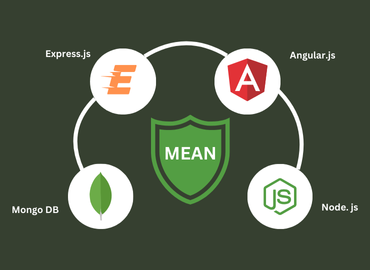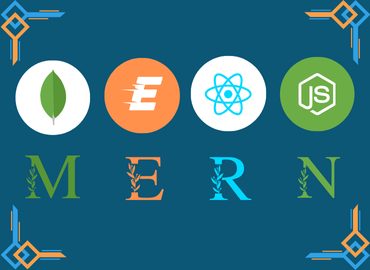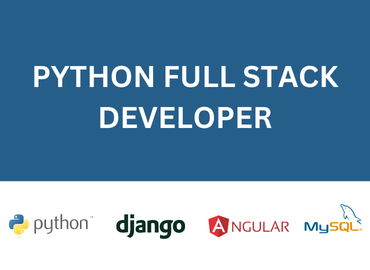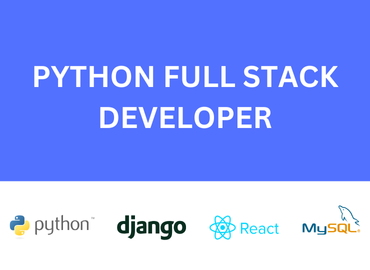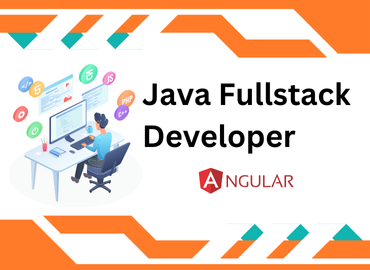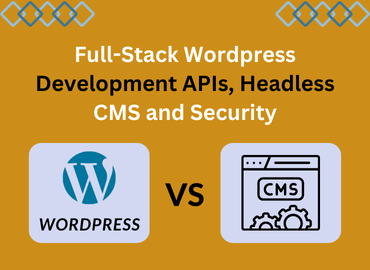Java Full-Stack Development with React

This course will teach you how to build full-stack applications using Java for the backend and React for the frontend. You’ll learn to integrate web technologies like HTML, CSS, JavaScript, TypeScript, and Node.js to create dynamic, scalable applications.
On the front-end, you will work with React and TypeScript to develop user-friendly interfaces. You’ll also use Node.js and Express for additional back-end services, understanding how to integrate these technologies for a complete full-stack solution. By the end of the course, you’ll have the skills to build modern, scalable web applications with a Java back-end, React front-end, and MySQL database, and understand how to seamlessly connect the client-side and server-side of a web application.
Course Information
This tutorial will help you master full-stack web development using Java for the back-end and React for the front-end, alongside essential technologies like HTML, CSS, JavaScript, TypeScript, Node.js, and Express. You will learn how to create dynamic, interactive web applications by connecting the front-end with React and the back-end using Java.
What Will You Learn?
This tutorial will help you learn full-stack web development with Java and React, along with the basics of HTML, CSS, JavaScript, TypeScript, Node JS, and Express. By the end of this course, you will be able to build dynamic web applications, integrate front-end and back-end services, and use modern web technologies effectively.
- Learn to build interactive user interfaces using React.
- Develop back-end services with Java and Node.js.
- Create and manage RESTful APIs to connect front-end and back-end.
- Understand how to work with databases and manage data in your applications.
- Use TypeScript and JavaScript for building scalable applications.
- Work with Express to build robust server-side solutions.
- Learn to deploy full-stack applications to the cloud.
- Build and deploy a real-world full-stack project.
Requirements
This course is designed for learners with basic knowledge of HTML, CSS, JavaScript, and general programming concepts. You do not need prior experience with Java or React, as all essential topics will be covered from the basics.
- Basic knowledge of HTML, CSS, and JavaScript.
- Familiarity with programming concepts (variables, functions, loops, etc.).
- A desire to learn full-stack web development.
- Access to a computer with an internet connection.
- No prior experience with Java or React required.
-
Introduction to JavaGet an overview of Java, its key features, and the Java technology stack. Understand why Java is widely used and its benefits for building cross-platform applications.
-
Setting Up Java Software and EditorsLearn how to install Java, set up the development environment, configure the Java path, and ensure the installation is successful. Familiarize yourself with the essential editors for Java development.
-
Classes, Functions, and Main MethodUnderstand the core concepts of classes and functions in Java. Learn how to create a main method, the entry point for Java programs, and use access specifiers and keywords like public, static, and void.
-
Data Types, Operators, and Static BlocksExplore Java’s primitive data types (int, float, boolean, etc.) and operators. Learn how to use static blocks for initializing class variables.
-
Control StatementsStudy Java’s control flow statements like if-else, switch-case, and looping constructs (for, while, do-while) to control the program flow.
-
Runtime Input and Scanner ClassUnderstand how to take runtime input from users using the Scanner class and handle command-line arguments to pass input data.
-
String Handling (Mutable & Immutable)Learn the difference between mutable and immutable strings in Java. Discover how to manipulate and work with strings efficiently.
-
Custom FunctionsLearn how to define and use custom functions in Java, both inside and outside of classes, to make your code modular and reusable.
-
Arrays and FunctionsExplore how to create, initialize, and use arrays in Java. Learn how to pass arrays to functions and manipulate them.
-
Introduction to Object-Oriented Programming (OOP)Dive into the principles of Object-Oriented Programming: understand the concepts of classes, objects, and constructors in Java to model real-world scenarios.
-
Inheritance and PolymorphismLearn how inheritance allows a class to inherit properties and behaviors from another class. Understand polymorphism, which enables methods to behave differently based on the object that invokes them.
-
Abstract Classes and InterfacesUnderstand the role of abstract classes and interfaces in Java. Learn how to define and implement abstract methods and interfaces to enforce abstraction in your code.
-
User-Defined PackagesUnderstand how to organize Java classes into packages for better code management. Learn how to create and use custom packages in your projects.
-
Exception HandlingStudy how to handle runtime errors in Java using try-catch blocks. Learn how to create custom exceptions and manage errors in a controlled manner.
-
File HandlingLearn how to read from and write to files in Java. Explore classes like FileReader, FileWriter, and BufferedReader to handle file operations.
-
Introduction to ThreadingUnderstand the basics of multithreading in Java. Learn how threads allow for concurrent execution of tasks, improving application performance and responsiveness.
-
Single-Thread and Multi-Thread ProgrammingExplore single-threaded and multi-threaded programming in Java. Learn how to manage predefined threads and create user-defined threads for multitasking.
-
Working with CollectionsLearn how to manipulate and interact with collections using Java’s interfaces and classes. Study methods for adding, removing, and accessing elements in collections.
-
Java Collections Framework (JCF)Get an introduction to the Java Collections Framework, which provides a set of classes and interfaces for managing groups of objects. Learn about commonly used collections like List, Set, and Map.
-
Advanced Java IntroductionDive into the core concepts of Advanced Java. This session introduces you to the advanced features of Java programming that will be essential for building dynamic web applications.
-
Software Installation (NetBeans / Eclipse)Learn how to install and configure Java IDEs such as NetBeans and Eclipse. This will set up the development environment needed for the course.
-
Basic of Web DesignUnderstand the foundational concepts of web design. This includes designing simple, structured web pages, making them visually appealing and functional.
-
HTML and Inline CSSGain an understanding of HTML structure and how to use inline CSS for styling individual HTML elements. Learn how to build and style basic web pages.
-
HTML and Internal CSSLearn how to integrate CSS directly within the HTML document using internal style tags. This enables easier management and custom styling.
-
HTML5 Forms and External CSSExplore HTML5 forms and how to use external CSS files to style a webpage. This is important for building interactive web pages with modern web design techniques.
-
Servlet IntroductionGet introduced to Servlets, the cornerstone of Java web development. Understand how Servlets work and their role in building dynamic web applications.
-
About HttpServlet and GenericServletDive deeper into the two types of Servlets: HttpServlet for handling HTTP requests and responses, and GenericServlet for handling other protocols.
-
How to Create a Simple Login Form and Calculation Form in Servlet?Learn how to create a basic login form and a calculation form using Servlets. This will help you understand how to handle form data in Java.
-
Session ManagementUnderstand session management in web applications. Learn how to store and retrieve user session data across different pages using Java.
-
JSP IntroductionLearn about JavaServer Pages (JSP) and how they enable dynamic content generation for web applications. Understand their structure and usage in Java-based web development.
-
About DirectoryUnderstand the directory structure used in JSP-based projects. Learn how to organize your JSP files, classes, and other resources properly.
-
About JSP TagsLearn about various JSP tags used to perform tasks like outputting dynamic content, creating loops, and working with data.
-
Custom TagLearn how to create and use custom tags in JSP. This makes your JSP pages more modular, reusable, and easier to maintain.
-
Action TagUnderstand the action tags in JSP that control the flow of execution on a webpage, such as form submissions, redirections, and more.
-
How to Add HTML and CSS in JSP Webpage?Learn how to add HTML and CSS to a JSP page, enabling you to design and style web interfaces alongside dynamic content.
-
How to Create a Simple Login Form and Calculation Form in JSP?Hands-on experience creating a simple login form and calculation form using JSP to handle user input and display results.
-
Basic SQL QueryGet introduced to SQL and the basic queries you need to interact with relational databases, including SELECT, INSERT, UPDATE, and DELETE.
-
Introduction to the Database Server? About MySQL Server and How to Install MySQL ServerLearn the basics of database servers, with a focus on MySQL. This session covers installation and configuration of MySQL to store your application data.
-
How to Create CRUD Query?Learn how to create the SQL queries for CRUD (Create, Read, Update, Delete) operations, which are essential for managing data in a database.
-
How to Select Data from the Database?Understand how to retrieve data from a MySQL database using the SELECT query. Learn how to filter and sort the data to display results effectively.
-
JDBC ProjectApply your learning by creating a hands-on JDBC project. This session guides you in connecting a Java application to a MySQL database to store and retrieve data.
-
About JDBC, Types of DriverGain a deeper understanding of JDBC (Java Database Connectivity) and the different types of drivers (Type 1, Type 2, Type 3, Type 4) used to connect Java applications with databases.
-
How to Connect with MySQL Server from Java JSP Front End to Java JDBC Back End Application?Final project where you apply everything you’ve learned to create a real-world application using JSP for the front-end and JDBC for back-end database interactions.
-
Create a Full Application Project Using JSP and JDBCDelve deeper into TypeScript's OOP features like modifiers, static methods, interfaces, and abstract classes to create more modular and scalable code.
-
Introduction to Spring FrameworkUnderstand the core concepts of the Spring Framework, which simplifies Java development by providing robust infrastructure support for building Java applications.
-
Spring Modules OverviewGain insights into the various modules of Spring, including Spring Core, Spring MVC, Spring AOP, and Spring ORM, and how they help in modular application development.
-
Understanding Spring Dependency InjectionLearn the importance of Dependency Injection (DI) in Spring. Explore how Spring manages object lifecycles and injects dependencies to simplify development.
-
Setting Up a Spring ApplicationLearn the steps to create a basic Spring application, including adding required JAR files, XML configurations, and setting up an environment for development.
-
Spring AOP (Aspect-Oriented Programming)Dive into Aspect-Oriented Programming (AOP) in Spring, which allows separation of concerns by applying cross-cutting logic (e.g., logging, security) to your application.
-
Spring ORM and Hibernate IntegrationExplore how Spring integrates with Hibernate ORM to manage database interactions efficiently, leveraging both frameworks for robust data management.
-
Spring JdbcTemplateDiscover the capabilities of Spring JdbcTemplate, a utility that simplifies database access and management using JDBC, making CRUD operations easier.
-
Introduction to Spring MVCLearn about Spring MVC and how to create web applications with controllers, request mappings, and views. Develop a basic web application using this framework.
-
Hibernate Introduction and ArchitectureGet an overview of Hibernate, its architecture, and how it simplifies database operations by mapping Java objects to relational database tables.
-
Setting Up a Hibernate ApplicationLearn how to set up a Hibernate application by configuring XML, connecting to a database server, and using annotations to map objects to tables.
-
Hibernate Query Language (HQL) and Entity ClassesUnderstand Hibernate Query Language (HQL) and how to create entity classes to run queries, enabling efficient data retrieval from databases.
-
Hibernate MappingExplore Hibernate’s mapping features, including One-to-One, One-to-Many, and Many-to-Many relationships, and how to implement them using annotations.
-
Introduction to Spring BootUnderstand what Spring Boot is and how it differs from the traditional Spring Framework. Explore its architecture and features like auto-configuration and embedded servers.
-
Spring Boot Setup and Project CreationLearn how to install Spring Tool Suite (STS) and create a new Maven project. Explore the pom.xml file structure and how to manage dependencies in Spring Boot.
-
Configuring a Spring Boot ApplicationUnderstand how to add the Tomcat server dependency, configure application.properties, and set up a simple front-end using HTML or JSP in a Spring Boot project.
-
Building a Simple Form in Spring BootDevelop a basic login form and calculator application using Spring Boot, handling form submissions and processing user inputs.
-
Spring Boot AOP (Aspect-Oriented Programming)Implement AOP concepts in a Spring Boot application, applying cross-cutting concerns like logging, security, and error handling without modifying business logic.
-
CRUD Operations with Spring Boot and MySQLCreate a CRUD application with Spring Boot using MySQL. Learn how to add JPA dependencies, create tables, and perform create, read, update, and delete operations.
-
Sending Emails in Spring BootLearn how to configure and send emails using Spring Boot, handling different email configurations for various use cases.
-
Exporting Data to Excel in Spring BootUnderstand how to import and export user data to and from Excel files in a Spring Boot application, enabling data management and reporting features.
-
JavaScript - Introduction About JavaScript, How to add the alert message? About document.write() and Console.logStart learning JavaScript by understanding how to integrate it into your webpage. You’ll explore basic functions like alert(), document.write(), and console.log(), which help you interact with users and debug code.
-
JavaScript - About Data Type, Variable and Value, JS CommentsExplore JavaScript’s data types, variables, and how to store and manipulate values. Learn about JavaScript comments and how they help document your code.
-
JavaScript - Function in JSLearn how to define and use functions in JavaScript, allowing you to group related code together, making it reusable and easier to manage. You'll explore function arguments, return values, and scope.
-
JavaScript - Function in JS (Continued)This section covers advanced function topics like anonymous functions, arrow functions, and callback functions. You’ll gain a deeper understanding of how functions work in JavaScript and how to use them to make your code more flexible and concise.
-
TypeScript: Getting Started with TypeScriptDiscover what TypeScript is, how it differs from JavaScript, and how to install the necessary packages for using TypeScript in your projects. Learn about basic data types and their usage.
-
TypeScript: Operators and Data TypesExplore TypeScript's operators and data types, such as let, var, any, Array, String, Object, Tuple, Enum, and null, and how to use them effectively in your code.
-
TypeScript: Object-Oriented Programming (OOP)Learn how to apply object-oriented principles in TypeScript, including classes, objects, properties, methods, constructors, and inheritance handling.
-
TypeScript: Advanced OOP ConceptsDelve deeper into TypeScript's OOP features like modifiers, static methods, interfaces, and abstract classes to create more modular and scalable code.
-
React: Introduction to ReactUnderstand what React is, its core features, and why it's a popular choice for building modern, interactive web applications.
-
React: Setting Up the Development EnvironmentLearn how to set up Node.js and NPM, install React, and configure your development environment to start building React applications.
-
React: Understanding React ComponentsDiscover the building blocks of React applications—React components—and learn how to create functional and class-based components.
-
React: Props and StatesUnderstand how to manage data flow in React using props and states, which are essential for creating dynamic, interactive user interfaces.
-
React: Introduction to React HooksLearn about React hooks like useState and useEffect, which enable functional components to handle state and side effects without the need for class components.
-
React: Creating UI Forms and Handling EventsLearn how to create interactive forms in React and handle user input with events like onClick, onChange, and others.
-
React: Routing with React RouterMaster the art of navigation within React applications by using React Router to handle multiple views and routes in a single-page application.
-
React: Working with APIs in ReactLearn how to fetch and display data from APIs in your React applications, handle asynchronous operations, and integrate external data sources into your UI.
| Batch | Start Date | Timing | Days | Mode |
|---|

